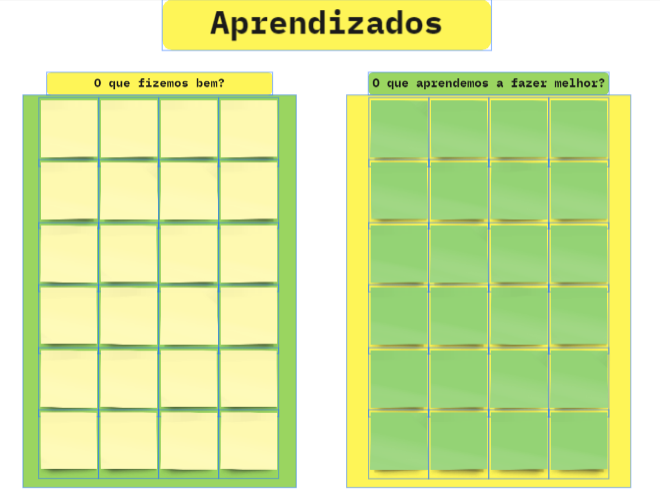Using YAY questions to improve learning
Hello everyone, everything is okay? Let’s go for one more article? This time, we will talk about a very simple Management 3.0 practice: yay questions!
According to Peter Senge, one of the greatest deficiencies in companies nowadays is their hability to learn, whether it isabout your employees, your team, your product or your customers. And the way we learn determines the knowledge we have accumulated and how we can use it to get the best result. This often depends on how we ask questions.
What are YAY questions?
YAY questions (learn more here) are a simpler, impartial and calm way to learn and acquire real feedback without leading to a negative view or pointing out correct errors. It is a way of valuing not only the result, but the commitment.
Essentially, YAY questions are all about these two questions:
- What did we do well? (by following practices): what did we do right? What happened while using these practices that could give confidence to those who want to use them?
- What did we learn? (by running experiments): during an experiment, for instance, what have we learned? What kind of learning experience did we have? Which topics were highlighted?
Both questions are more than enough reason for us to celebrate. Both teach us a few things about learning processes and why value them.
Why use YAY questions and not other practices?
Using a practice a technique doesn’t mean you can’t use another. We can adapt, merge or add them so we can get the results we want from a workshop or exercise. Regarding YAY questions, I’ve used it a few times during retrospectives, workshops, product inception sessions, etc., and I’ve done for three simple reasons. First, because it’s extremely simple to ask two questions so people could tell you if they did something good and if they’ve learned something. Second, I can use these questions for practically any situation. And the third reason, it carries no judgement. You can ask these questions and people would tell you even their mistakes, because we are not calling them “mistakes”. Failures are a great way for learning, and yet people get all shy to called it “failures”, but yay questions can change that.
How I used YAY questions
I’m gonna be objective here and tell you about my lastest experience using this practice, ok? Recently I prepared a set of workshops in a company for IT, product development marketing areas so they could have a deeper understanding of the bussiness goals related to thee company app. It was a learning experience, so they had to work together in order to find a few opportunities and business ideas to improve user behavior and sales increase.
It was an incredible exercise since I’ve never assembled such a diverse and enthusiastic group before. There was so many ideas and focus, the energy sorrounding it was awesome.
At the end of the third session, we finally had a set of items and hypotheses that all three teams could work on. Now, knowing that the most important thing during that three-day session was to learn, I had to use YAY questions to see how the participants would behave. Usually I’d use the simple “What did we do good, What did we do wrong”, but that might bring a bad vibe so I draw something like the image below:

The first set of post it represent the What did we do well question. People started to say that the interaction was great, the exercises and the way I explained them. We’ve had feedback about how we focused on the problems and not the solutions, the constraints to work on them and how well we could establish quality standards.
The second set of post its are for the What did we learn question and that’s peculiar part. People didn’t complain. They said that that kind of focus was somethign that they’ve learned, the way they empathized with team and customer pain points, their issues with business areas’ dependencies. They expressed how much this kind of dynamism helped them to see things from another perspective. They were actually LEARNING.
What I’ve learned with all of this
In addition to all the learning that the practice helps to provide, it is important to take some precautions while using it. The way you talk about is the first one. If you’re familiar with stuff like facilitating a retrospective session you must have used some sort of technique that tells you “what your team did well”, “what was so good’ or “what did we do wrong”. And that’s the problem. we tend to find mistake, things we usually fail without realizing that the main focus of this exercise is to learn. People are afraid of telling you that they’ve made a mistake. But if ask them what did they learn about or their main challenges, you might get a better chnce. We iinvite people to talk about failure without saying it.
When you start noticing the content of this kind of feedback it’s simply amazing. People would change things from “we are bad at working together” and started going to “We ned to focus on this work together”. Those are powerful expressions that should help your team to create a faster and lighter learning curve.
So did you like it? Give us some feedback!
